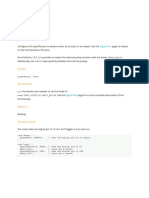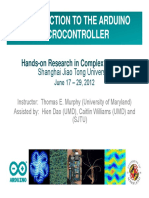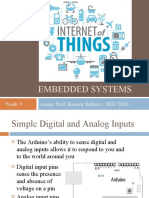0% found this document useful (0 votes)
63 views2 pagesArduino Basics Full Document
Arduino is an open-source platform for building electronic projects, consisting of a microcontroller and an IDE for coding. It uses a simplified version of C++ and has a structure that includes a setup function for initialization and a loop function for repeated execution. The document also covers wiring basics, including connecting LEDs, buttons, and potentiometers with appropriate resistors and pin configurations.
Uploaded by
zamrockkzbinarcidyCopyright
© © All Rights Reserved
We take content rights seriously. If you suspect this is your content, claim it here.
Available Formats
Download as DOCX, PDF, TXT or read online on Scribd
0% found this document useful (0 votes)
63 views2 pagesArduino Basics Full Document
Arduino is an open-source platform for building electronic projects, consisting of a microcontroller and an IDE for coding. It uses a simplified version of C++ and has a structure that includes a setup function for initialization and a loop function for repeated execution. The document also covers wiring basics, including connecting LEDs, buttons, and potentiometers with appropriate resistors and pin configurations.
Uploaded by
zamrockkzbinarcidyCopyright
© © All Rights Reserved
We take content rights seriously. If you suspect this is your content, claim it here.
Available Formats
Download as DOCX, PDF, TXT or read online on Scribd
/ 2




























































